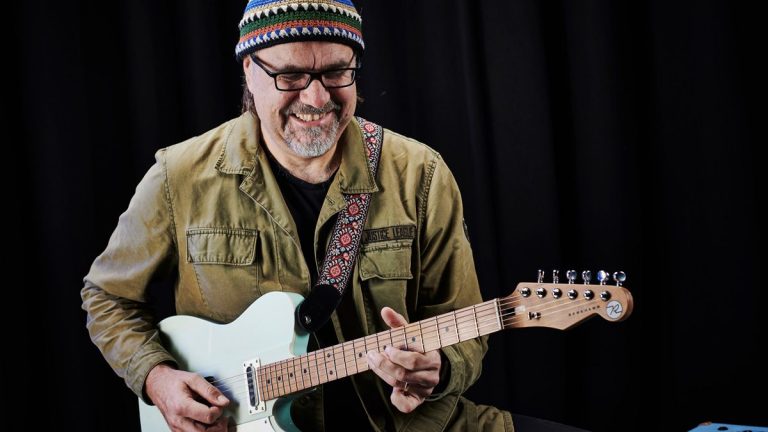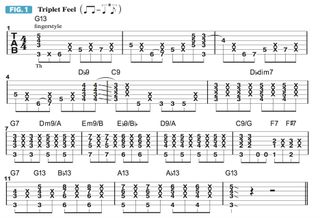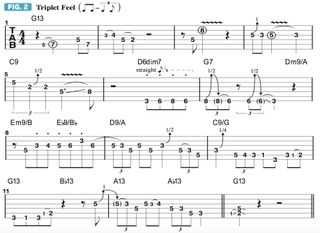
Howdy, and welcome to my column! Over the course of these classes, I’ll be discussing a wide range of approaches to each rhythm guitar taking part in and improvisation in the realms of blues, rock, nation and extra… which begs the immortal query: Can you dig it? I believe you can!
Years in the past, I might typically play duo gigs with a harmonica participant, and when he’d take a solo, I had to cowl the chords, bass line and groove with my guitar, “comping” behind his solos.
We might play a lot of 12-bar blues songs, however as a substitute of simply sticking with a commonplace I – IV – V (one-four-five) chord development, I might typically throw in a few “jazzy” substitutions, with out going complete jazzbo (slang for jazz fanatic). Let’s use the key of G, for instance. A normal I – IV – V “dominant”-type blues in G consists of the chords G7 (I7), C7 (IV7) and D7 (V7).
Determine 1 represents a 12-bar rhythm half in G that includes some further concord, by way of expanded chords like 9ths and 13ths, in addition to a few passing chords that pull the music towards a jazzier sound. The instance is performed with a swing-eighths triplet really feel, also called a shuffle.
In bars 1-4, I complement a G13 chord with a strolling bass line, including muted-string accents on most of the eighth-note upbeats (the “and” counts). On beat 4 of bar 4, I play a Db9 chord to anticipate the change to the IV chord, C9, sliding down on beat 1 of the subsequent bar.
In bar 6, I play Dbdim7 on beat three as a passing chord again to the I, G7. In bars 7 and eight, I add harmonic curiosity to the development by shifting by way of a sequence of chords each two beats: G7 – Dm9/A – Em9/B – Eb9/Bb. I then land on the V chord, D9/A on beat 1 of bar 9.
In the final two bars, I spice issues up by beginning on G13 then chromatically descending Bb13 – A13 – Ab13 to spherical out the development.
Determine 2 is an improvised solo performed over this development, for which I took an “Albert Collins” method and emulate his distinct melodic style.
A signature method of Albert’s was to alternate between parallel main and minor pentatonic-based riffs, and right here I start with traces primarily based on G main pentatonic (G, A, B, C, E) after which change to G minor pentatonic (G, Bb, C, D, F) in bar 4.
As you play by way of the solo, you’ll see that I proceed to alternate between the two scales. Albert picked aggressively along with his fingers, snapping the strings in opposition to the fretboard, and I took the similar method right here.
Selecting with one’s fingertips in this manner will present the alternative for better musical expression by way of extra pronounced contrasts in articulation and dynamics, so be cognizant of these components as you play.

